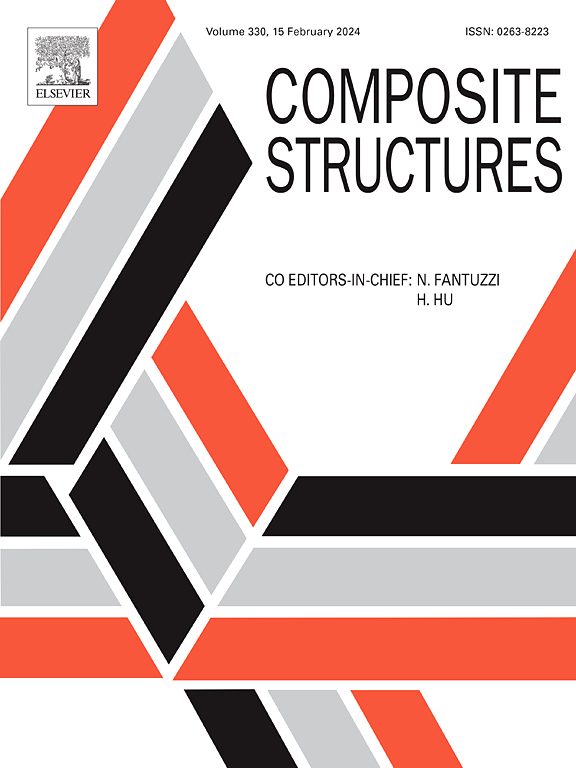Experimental and analytical investigation of the local buckling behaviour of unsymmetrically laminated thin-walled beams
IF 6.3
2区 材料科学
Q1 MATERIALS SCIENCE, COMPOSITES
引用次数: 0
Abstract
The lightweight design of composite structures typically results in the configuration of thin-walled and slender components, which require consideration of structural stability. In addition to the established design criteria and calculation methods for stability analysis, the experimental validation of such methods represents a significant aspect of ensuring the reliability of design concepts. This study addresses the closed-form analytical calculation of the critical buckling load of unsymmetrically laminated composite I- and C-beams. This represents a novelty since the majority of available investigations deal with symmetrical layups. The presented methods employ the discrete plate analysis and consider individual beam segments that are simply supported at the loaded edges. Based on the analytical results, a novel experimental setup is presented, which implements the simple support of the individual unsymmetrically laminated segments in the experimental study. The buckling loads are obtained through experimental investigation employing two distinct methodologies. In contrast to global stability failure, local buckling may result in a significant load increase in the postbuckling regime, as evidenced by a parabolic curve in the force–deflection diagram. This knowledge can be used to identify the critical load experimentally. The second evaluation method is based on the loss of stiffness in the longitudinal direction of the beam at the initial stage of buckling. A comparison of the analytical and numerical calculation methods with the experimentally obtained buckling loads of unsymmetrically laminated beams demonstrates a high degree of correlation. The presented experimental setup is shown to be reliable, and the closed-form analytical methods are validated.
求助全文
约1分钟内获得全文
求助全文
来源期刊

Composite Structures
工程技术-材料科学:复合
CiteScore
12.00
自引率
12.70%
发文量
1246
审稿时长
78 days
期刊介绍:
The past few decades have seen outstanding advances in the use of composite materials in structural applications. There can be little doubt that, within engineering circles, composites have revolutionised traditional design concepts and made possible an unparalleled range of new and exciting possibilities as viable materials for construction. Composite Structures, an International Journal, disseminates knowledge between users, manufacturers, designers and researchers involved in structures or structural components manufactured using composite materials.
The journal publishes papers which contribute to knowledge in the use of composite materials in engineering structures. Papers deal with design, research and development studies, experimental investigations, theoretical analysis and fabrication techniques relevant to the application of composites in load-bearing components for assemblies, ranging from individual components such as plates and shells to complete composite structures.
 求助内容:
求助内容: 应助结果提醒方式:
应助结果提醒方式:


